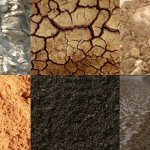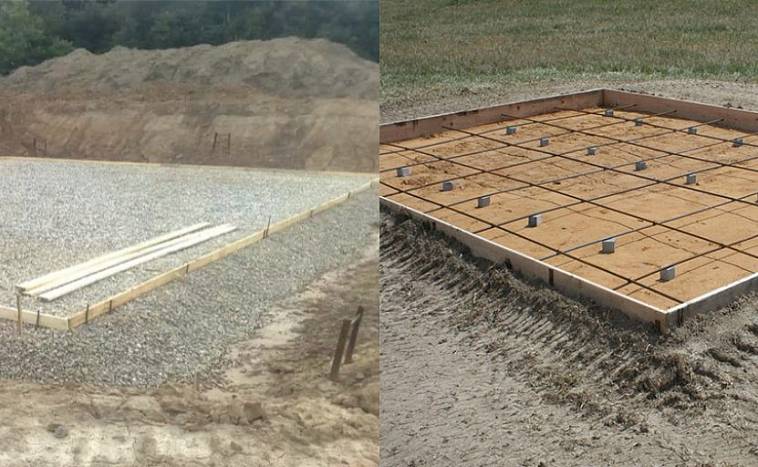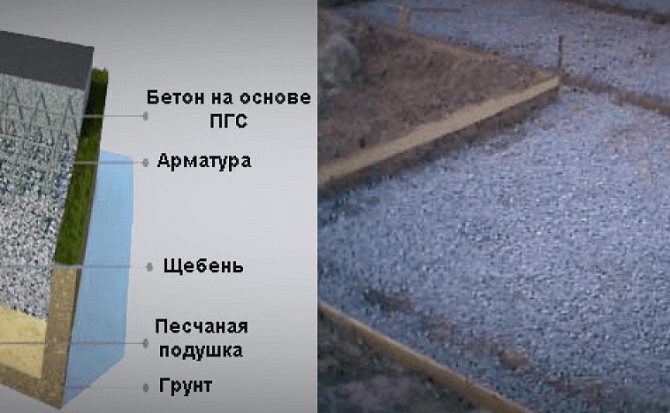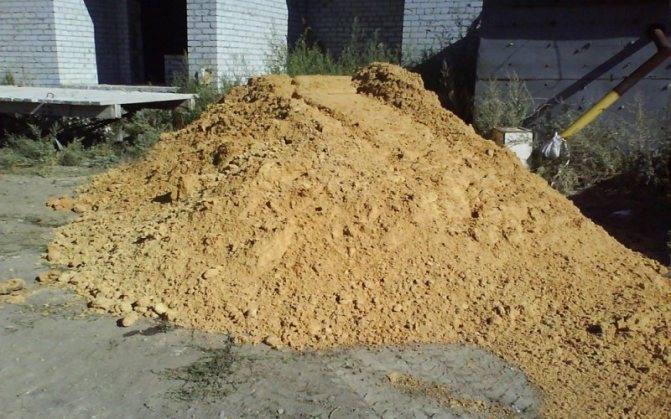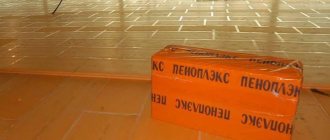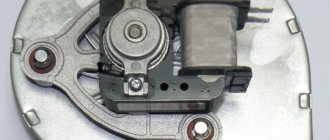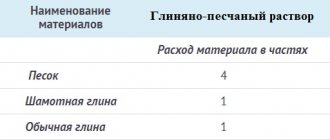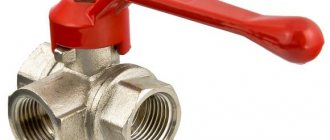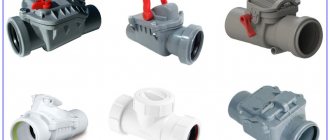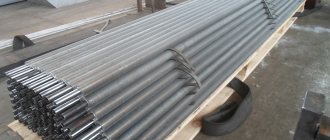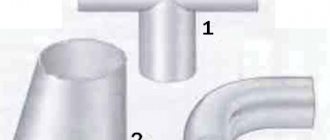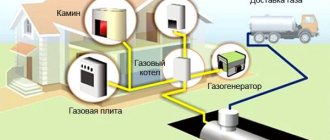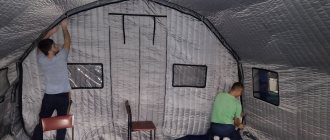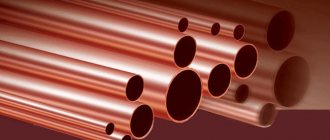And although each vibrating plate includes instructions for use in the delivery set, questions about the use of the tool arise quite regularly.
The working capabilities of the vibrating plate are directly related to its weight. The greater the weight of the equipment, the greater the layer of material it is able to compact, tamp. The table below shows general data on the functional features of various vibratory plates.
| Vibratory plate weight, kg | Type of material to be sealed | |||||||||||
| Sand, crushed stone, other non-cohesive soils | Silty weakly cohesive soils | Cohesive soils (clay, sandy loam) | Asphalt | |||||||||
| Suitability | Layer height, cm | Number of passes | Suitability | Layer height, cm | Number of passes | Suitability | Layer height, cm | Number of passes | Suitability | Layer height, cm | Number of passes | |
| 60…90 | + | 15-20 | 3-5 | ± | 10-15 | 4-6 | — | — | — | + | — | 2-3 |
| 100…250 | + | 20-30 | 3-5 | ± | 15-25 | 4-6 | — | — | — | — | — | — |
| 300…450 | + | 30-50 | 3-5 | ± | 20-40 | 3-5 | — | — | — | — | — | — |
| 500…950 | + | 40-70 | 3-5 | ± | 30-50 | 3-5 | — | — | — | — | — | — |
Why is a pillow needed
Probably, it is incorrect to pose the question of which bedding under the foundation is better: sand or crushed stone. But it arises all the time when a suburban developer starts building a house.
The bottom line is that the base under the house must meet certain requirements:
- be strong and tight;
- groundwater should not accumulate under it;
- even if repeated wetting and drying occurs, the base should not lose its strength characteristics;
- under the foundation there should not be a layer in which active organic inclusions are present, because they will not only negatively begin to affect the quality of the foundation, but also rot;
- the bedding should not change during frosty heaving of the soil;
- and it should not allow uneven shrinkage, which leads to deformations of the foundation structure.
It is understood that the soil at the construction site may not meet the requirements stated above. That is, it will be difficult to select materials for the pillow without knowing the type of soil. Therefore, many developers work, so to speak, with what is available upon availability.
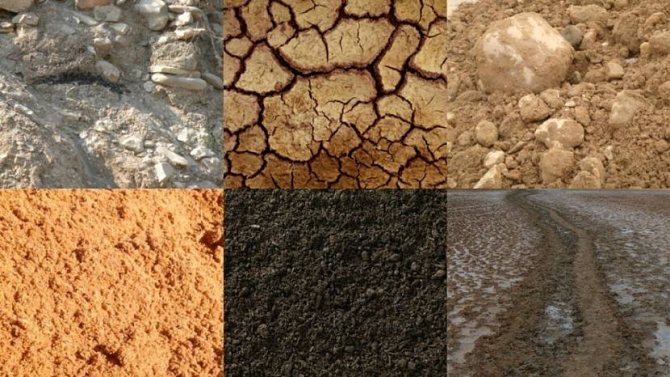
But in any case, it is necessary to understand that a layer is needed under the foundation, which at least approximates in its characteristics to the above-indicated requirements. What materials are used today to form the foundation cushion:
- sand;
- crushed stone;
- gravel;
- Sand and gravel;
- gravel in the form of crushed rock, which is called grit;
- skinny concrete layer.
Each of the designated materials has its own properties and characteristics, therefore, they are selected for the pillow, taking into account the characteristics of the soil at the construction site. But it should also be noted that the main task of the pillow is to adjust the performance of the soil under the foundation. Therefore, this building element is an optional structural part of the house. For example, on firm clay soils, a pillow is often not formed.
But if such is included in the project, then first the type of foundation for the ground is selected, and then the pillow.
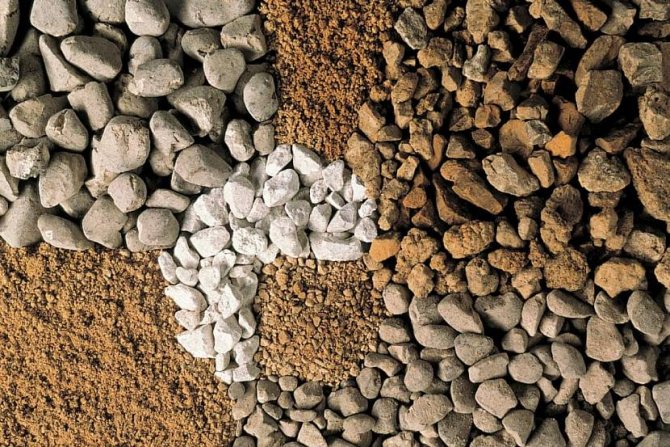

Varieties of foundation pillows
To begin with, the ideal cushion is a poured concrete layer. Sand, crushed stone and other materials indicated above are just an opportunity to reduce the cost of building a house. But among them the best is compacted sand. And there are several reasons for this:
- A well-compacted sand cushion has the same strength characteristics as dense soil.
- It evens out the uneven bottom of the foundation pit or trench more easily than other materials.
- Sand is an excellent drainage material that helps to drain melt and rainwater from the foundation structure.
- The formation of the pillow itself does not require the use of special equipment.
But it should be noted that the sandy layer has its drawbacks. First, the material is quickly washed away by groundwater. Second, it has poor transverse strength, especially if the load is pointwise.
For backfilling, it is better to use coarse-grained or medium-sized sand. A prerequisite is the minimum amount of clay inclusions. The thickness of the layer is 10-70 cm. It is possible to tamp in one pass a layer up to 5 cm thick, therefore the process of forming a sand cushion is long and laborious.
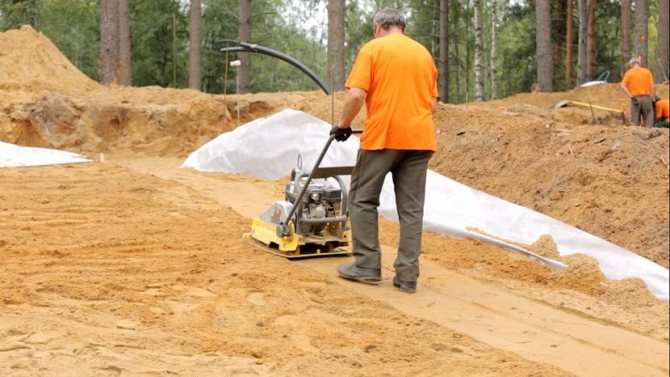

On our website you can get acquainted with the most popular projects of brick houses - from construction companies presented at the exhibition of houses "Low-rise Country".
Sand ramming is carried out with moistening. And here it is very important to catch the amount of water. If you overdo it with this, then the sand will begin to disperse from the place of ramming. That is, there will be a decrease in the thickness of the layer and a decrease in its density, which cannot be allowed.
The easiest way to determine the exact amount of water is to prevent it from appearing on the surface of the pad as it is tamped. And the required density of the compacted sand is determined by walking on it. There should simply be no traces on the surface.
So, having figured out why you need a sand cushion under the foundation, as well as with the technical characteristics of the layer, we turn to crushed stone.
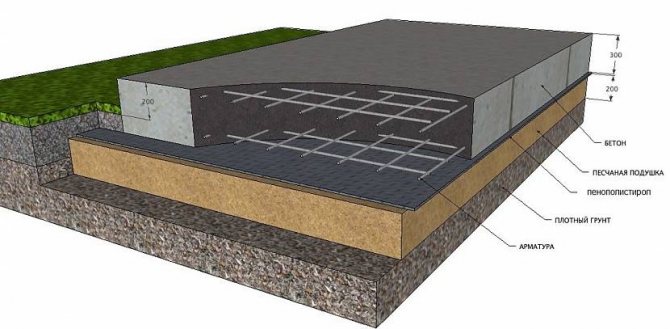

Rubble pillow
More recently, in private housing construction, one method was used to form a cushion from rubble. It was simply interfered with the bottom of a foundation pit or trench, and then rammed. It turned out a good quality pillow, which had one serious drawback - under the influence of groundwater, the earth was gradually washed away, only rubble remained. That is, the strength of the layer itself decreased.
Which crushed stone is better to use for the foundation cushion. To form this element at home today, crushed stone of large and medium fractions is used. But this building material is used only if it is necessary to ensure the maximum possible throughput of the layer in terms of its drainage characteristics. At the same time, a drainage system must be formed around the house, and under it.
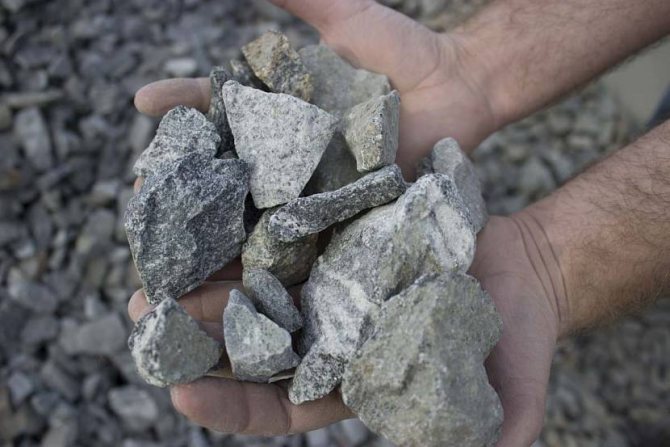

In all other cases, either a lean concrete solution is laid using crushed stone, or a mixture of sand and crushed stone. The latter, while seemingly inconsistent in terms of strength, has its own advantages over other materials:
- high drainage qualities that do not allow water to accumulate in the pillow;
- sufficient strength to speak of the ability to withstand the loads of a house of three floors;
- resistance to erosion.
Of course, even a mixture of two materials is a layer that absorbs water well. Therefore, there is a high probability that the cement milk, which is part of the concrete solution poured into the formwork, will leave the concrete, weakening it.
What the builders offer in this case. There is only one way out - to waterproof the bottom of the trench or foundation pit. But, as practice shows, it is often more expensive than pouring lean concrete.
Sand ramming technology for foundation
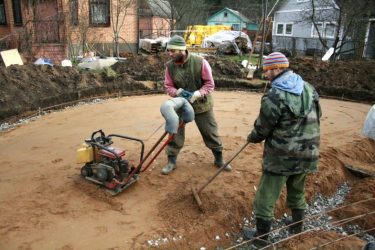

Any building - from a small private house to a large shopping center - is based on the foundation. The strength of the entire building and its service life depend on its quality. But it is not only the quality of the concrete used that matters, but also the exact observance of the entire technological process.
For example, poorly executed tamping of sand for the foundation can lead to the fact that the erected building can shrink, accompanied by the formation of cracks, both in the foundation itself and in the walls of the building.
This, in turn, can lead to an increase in heat loss and, as a result, an increase in heating and air conditioning costs for the entire building.
Choosing sand for a sand cushion
Not every sand is suitable for making a sand bed for a foundation. Particular attention should be paid to its quality if you use a manual rammer with your own hands - for these purposes, gravelly sand with a sufficiently coarse fraction is needed. By using fine sand, it is impossible to prevent strong shrinkage of the building after construction, and it can be very uneven.
Sand mixture
River sand is the most suitable for construction, but if it is impossible to use it, clean open-pit sand is also suitable. In order for the service life of the sand cushion not to decrease as a result of its mixing with the soil and the action of ground water, it is advisable to lay a layer of geotextile on the bottom of the pit, the strips of which, if possible, should be sewn together. Such a simple and inexpensive technique will significantly increase the life of the building, as well as eliminate its shrinkage even after many years of operation.
A simple tool for complex work
Despite the fact that creating a sand cushion requires the involvement of special equipment - an excavator and a dump truck, which are used to dig a pit and deliver sand, otherwise, all other tamping tools are simple and affordable:
- wooden / metal pegs used for quality markings;
- building level (laser is quite convenient);
- long tape measure;
- a manual vibrator or vibrating plate, and if they are not available, you can use a round bar of sufficient diameter.
A properly created sand cushion ensures a complete absence of shrinkage (or its minimum values), protects the foundation from the destructive effects of water and the process of natural ground movements. Most often, such a pillow is created under a monolithic or strip foundation.
Sand cushion under the foundation - when you need it
Before starting construction, it is necessary to assess not only the condition of the soil in the area of \ u200b \ u200bthe construction of the house (bearing capacity, proximity of underwater waters), but also the climate conditions, as well as the total weight of the structure. Heaving soil is compulsorily rammed, which is significantly deformed during freezing and thawing.
If you make a mistake with the choice of material for installing a slab under the foundation, most likely the building will shrink heavily, which will entail the formation of cracks in the walls and the foundation itself.
In addition, if the soil in the construction area has a high bearing capacity, and the water table is extremely low, you can do without creating a sand cushion.
Of all the materials that are used to create a pillow, it is sand that is most acceptable. It not only allows you to save a decent amount, compared to a slab of crushed stone or concrete, in addition, it is quite acceptable to tamp sand with your own hands - for example, it is much more difficult to work with crushed stone. There is only one limitation on the construction of a sand cushion - heavy buildings (apartment buildings, shopping centers) cannot be built on it, but for private low-rise construction, it is almost an ideal material.
Sand pillow
A properly designed sand cushion has many benefits:
- The base created with the help of sand fully complies with all standards used in low-rise construction.
- Complete protection of the entire building from the negative effects of groundwater.
- Creation of a perfectly flat construction site without the use of complex and expensive technologies.
- The ability to carry out all work on your own.
- Quite affordable cost of this important stage of work.
Features of an independent device of a sand cushion
Before starting work, it is necessary to determine several points on which the quality of the resulting base directly depends:
- the thickness of the pillow must be at least 200 mm;
- the most successful option is the trapezoidal shape of the pillow;
- the optimal base thickness is considered to be a value that does not exceed the width of the foundation by more than 3 times.
What material to give preference
Let's start with the question - what material is better for a pillow under a strip foundation: sand or crushed stone. The tape structure is most often used in private housing construction, hence this question.
It is necessary to approach it like this. If the foundation will be constructed from ready-made concrete blocks, then the best option is sand, because it distributes the load from the foundation structure more efficiently. Plus: it is easier for them to level uneven surfaces. But there is one nuance - the sand layer is rammed with special units, which are called vibrating plates. If they fit in the trench, then sand can be used. If not, then it is better to ditch this material in favor of lean concrete.
As for the slab foundation, the situation is the same here. You just need to understand that sand is often used only because it is cheaper. And, as practice shows, it is often necessary to level the bottom of the pit by forming a sufficiently thick bedding layer. In this regard, both crushed stone and concrete solution increase costs several times.
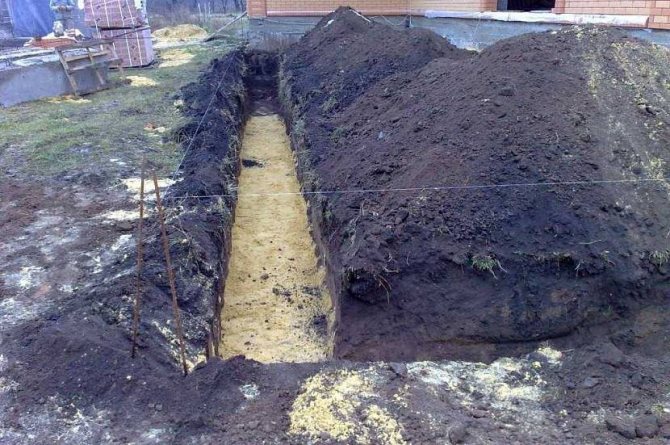

But for the pile foundation, it is better to use crushed stone. Because the main function of the pillow in this case is groundwater drainage. And, as an addition, protection of the foundation structure from the negative effects of organic impurities in the soil.
Pillow shaping technology
So, let's figure out the topic - how to properly make a pillow under the foundation of sand and rubble:
- Sand is poured into the bottom of the trench. It is rammed until the layer height is 10-15 cm.
- Next, crushed stone is poured. The material is also rammed until the height of the common layer is 40 cm.
Of course, you need to understand that the thickness of the pillow is selected taking into account the type of soil at the construction site. The softer the soil, the thicker the layer of the materials to be laid. It should be borne in mind that the width of the backfill should be 15-20 cm greater than the width of the foundation on each side. And the crushed stone must form a horizontal surface.
As for the question of what fraction of crushed stone is needed for a pillow under the foundation, this has already been mentioned above. Just a reminder once again - within 20-40 mm.
How to use a vibratory plate
Sand under the foundation is rammed manually using a manual vibrator or a homemade bar with handles, or with a special device - a vibrating plate, which significantly speeds up the process of erecting a sand cushion. The use of a particular ramming method depends on the size of the structure and the amount of work. The sand is laid and rammed in several layers, each layer having a thickness of at least 20 mm. And they switch to the filling of the next layer after the previous layer has been compacted tightly.
In this case, you should constantly monitor the evenness of the base using the building level.
The most optimal choice for a foundation cushion is considered to be coarse gravelly sand. It is undesirable to use fine-grained material, since it has low resistance to compression, which can lead to significant shrinkage of the erected building. Often, ordinary river sand with medium fractions is used for backfilling.
To improve performance, sand can be mixed with gravel or crushed stone, or each type of these materials can be used to create a foundation cushion.
Depending on the number of storeys of the object being built and its mass, the thickness of the pillow can be in the range from 10 to 25 cm.The minimum layer is usually intended to level the soil. The maximum size is calculated by multiplying the strip footing width by three.
The most reliable is considered to be a sand cushion, laid in the form of a trapezoid, with the device of which there is a gradual expansion upward at an angle of 30 degrees. One of the problems when operating a foundation on a sand bed is that the sand mixes with the soil and silts up at a high GWL.
To avoid this and extend the life of the base, before filling the sand with a waterproofing or other material that will reliably protect the pillow from mixing and silting.
It should be noted that the sand cushion, even if it is correctly laid and tamped tightly, cannot always provide the necessary strength and durability of the strip foundation.
Briefly about the main
As you can see, the two materials indicated above can be used for the foundation cushion, either individually or in mixed form. You should not compare them categorically, that is, sand is better or crushed stone. In each case, one factor must be taken into account - the type of soil.
At the initial stage of construction, when the earthworks are completed, they proceed to the preparation of the base of the base of the foundation. At the bottom of dug trenches or a foundation pit, a pillow is made under the foundation. For small objects, it is better to form a pillow from sand. The question arises, how to choose the right sand for the foundation cushion?
Compaction of sand during construction
Artificial compaction (ramming) of sand is one of the priority stages in the use of the material in construction.
Today, there are a number of state standards GOST 8736-93, 25100-95 and SNiP 2.05.02-85, which establish the optimal ramming performance. They are graded within 0.95-0.98 Purchase.
Ignoring the requirements for compaction (compaction) of sand can have the most negative consequences. The mass of such sand will sag over time, which in turn leads to the subsidence of the foundation, the formation of holes, etc.
The specialists of our company are ready to help with any questions regarding the calculation of the coefficient of compaction of sand. We will supply quality material with a mandatory purchase count.
Sand classification
Sand is a versatile natural building material. It is a sedimentary rock composed of grains of the mineral quartz.
Grade 1 sand
The breed is subdivided into several modules of the grain size of the breed:
- Large - from 2.5 to 3.5 mm;
- Medium - from 2 to 2.5 mm;
- Small - from 1.5 to 2 mm;
- Very small - from 1.5 to 0.7 mm.
The current legislation in Russia obliges all manufacturers of building materials, including sand minerals, to certify their products. The building material is divided into three classes:
- Grade 1 combines sands with compressive strength up to 30 MPa. They are used for the manufacture of concrete and reinforced concrete structures;
- The 2nd class includes material with a compressive strength of up to 20 MPa. Used for the manufacture of concrete and reinforced concrete products and other structures;
- The special grade 3 sandstone has a compressive strength of up to 40 MPa. It is used for the production of reinforced concrete products with a high bearing capacity.
Sands by their natural origin and methods of its extraction are of several types:
Quarry sand
The mineral is mined in quarries in a mechanized way. This rock contains many inclusions in the form of stones and clay. Without additional processing, it can be used as a bedding under the foundation. The quarry mineral is sieved or washed. Foreign impurities in the form of stones and clay particles are screened out through a special sieve.
The rock is washed with a large amount of water, washing out clay and other inclusions.Alluvial sandy rock contains fine particles of about 0.6 mm. It can be used for plastering work.
River sand
I extract the river mineral with floating dredges from the bottom of the river. This breed is better than other types of sand in terms of its quality characteristics. The high quality and purity of the sand is due to the natural purification by the waters of the river.
As with sea pebbles, the shape of river sand grains is also rounded. Therefore, when using river sand as a foundation cushion, reinforced compaction of the sand layer will be required.
Sea sand
To use sea sand as a building material, it is subjected to double processing. First, during the extraction of sand, foreign impurities are removed from it, then the rock is subjected to hydromechanical treatment.
The sea mineral is considered one of the highest quality minerals. They use it in all areas of construction.
Crushed sand
Crushed sand is mined by crushing rocks with mechanical mills. Its cost is quite high, which is reflected in the price of the material.
The advantage of the material is the irregular shape of the grains of sand. This ensures a tight connection of the rock particles with each other. When compaction of the sand bed of the foundation, there is a slight decrease in the volume of backfill, which reduces the consumption of sand.
What sand is better to use
As we have already found out, sand (both quarry and river) can be divided into several different fractions. The smallest of them is not used at all when performing work such as making a foundation. Even if you are making a non-recessed base option for a light veranda or gazebo. This is due to the fact that the fine material will quickly settle, which is why the pillow will lose its shape in a short time, as a result of which the finished structure will be skewed.
Accordingly, in order for the foundation pillow to serve as long as possible, it is better to use larger sand.
Many experts in the field of construction agree that river sand of the middle fraction is best suited as a cushion under an unburied foundation. However, if you use coarse sand, this will not affect the quality of construction work.
As for quarry sand, its use, in principle, is also quite acceptable. But in terms of its quality characteristics, it differs significantly from the river one. Therefore, many people prefer to act according to the principle: why buy low quality material, if better quality can be bought not much more expensive.
When choosing sand in order to make a cushion under the foundation, you should pay attention to the following points:
- if the material has a large number of inclusions of a clay nature, the solution from such sand will not be strong enough;
- you need to choose not too loose, but not too wet;
- before use, the sand must be additionally sieved.
Sand pillow
The underlying layer of the foundation sole is multifunctional in its intended purpose:
- Backfilling under the base of the foundation levels the soil base of the trench or foundation pit. It is imperative to arrange a sandy underlayment under the precast concrete foundation blocks.
- The sand layer helps to prevent the foundation from moving on weak heaving soils. Due to the filling, the bearing capacity of the soil base increases.
- When the thickness of the sandy litter is more than 30 cm, the possibility of capillary penetration of moisture from the soil to the base of the building is interrupted.
- Sandy rock removes water better than other building materials, thereby protecting the base structure from soil heaving. Without an additional drainage device, the mineral can become silted. Before starting construction, it is necessary to determine which drainage is better for the underlying layer of the foundation.
For the construction of the underlying layer, they try to use only coarse and medium-sized sand. The sand layer protects against siltation by groundwater with waterproofing. When silting up, the underlying layer can turn into a heaving base.
Geotextile for cushion insulation
To avoid this, roofing material is laid in two layers, polymer material, geotextile or other waterproof material, on the ground in dug trenches under a monolithic tape, at the bottom of a pit for a reinforced concrete slab. What type of waterproofing to use is up to the developer.
If the embankment is of great height, then sand under the foundation is poured in layers 200 mm high. Each layer is moistened to increase the adhesion of the grains of sand.
Compaction of the next layer of sand is obligatory. For this purpose, both an electromechanical vibrating plate and a rammer made of improvised material are used.
Tamping cushions
The manual rammer is easy to manufacture. A double-sided handle is nailed to the upper part of the block, and a wide board 25-30 mm thick is attached to the lower cut of the log. The height of the fixture should be comfortable for work.
Seal Applications
Here is a list of areas where compaction is most commonly used:
- Road construction
- Railways
- Building foundations
- Airports and ports
Car roads
The variety of modern highways is very large: from unpaved country roads to multi-lane highways with asphalt concrete pavement.
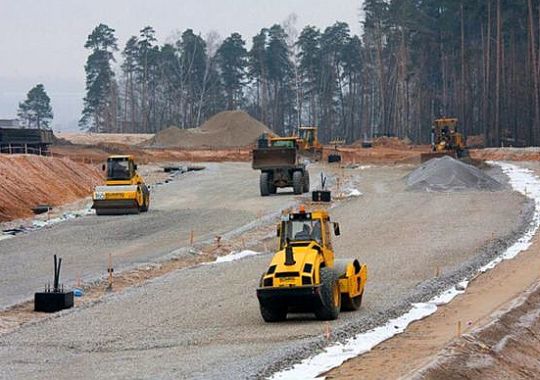

Regardless of the type of road, in order to increase the bearing capacity of the roadbed and increase the service life, it is necessary to use compaction of all layers of the road, including the embankment.
The road is built in two ways - on an embankment or in a cut. The pavement consists of an underlayment, a base layer and final pavement layers. Its main task is to evenly distribute pressure from surface loads over the entire subgrade.
The maximum pressure occurs on the surface, therefore the requirements for the quality of the material and its compaction are maximum for the pavement layers - asphalt or asphalt concrete.
The base layer provides rigidity to the coating layers, therefore the requirements for its sealing are also great. Usually, crushed stone or stone filling is used for these layers.
Railways
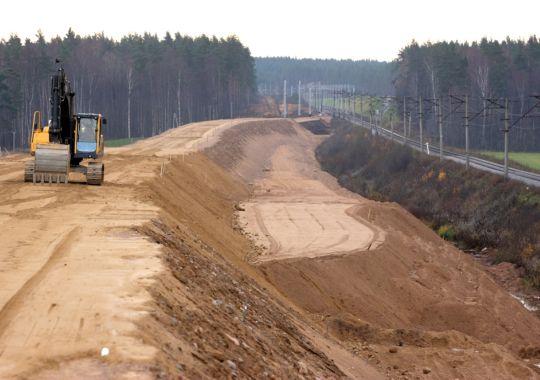

Throughout the world, railways provide most of the freight traffic. Much of this is the transport of extremely heavy materials such as ore and coal. Therefore, the ability to withstand loads is critical for the railway. And this cannot be achieved without high-quality compaction of the railway embankment.
Building foundations
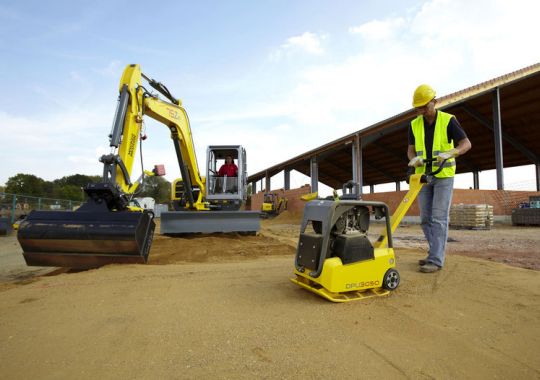

The stability and service life of any type of building directly depend on the quality of the foundation. This is especially important in places where there are no solid soils.
Erection of a high-quality drainage cushion under the base of buildings is problematic without the use of sealing technology.
Large infrastructure projects: ports and airports
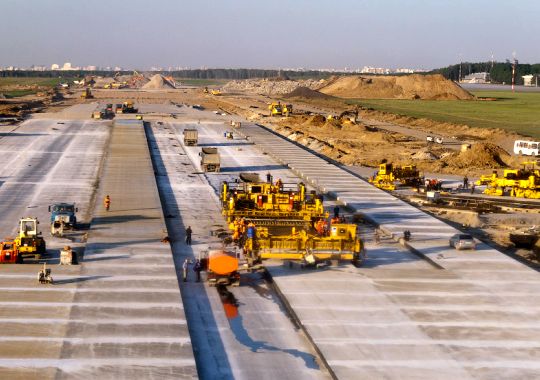

In the modern world, the cargo turnover of airports and seaports has grown many times over. In order to cope with this flow of cargo, the intensity of the movement of ships and aircraft has significantly increased, and therefore the load on the runways and berths has increased. At these sites, the requirements for the quality of work and materials used are maximum. Compaction standards for all sub-base and pavement layers are significantly higher than at other sites.
General information
What is it for
Ramming, i.e. vibrating plate, consists of five main elements. it engine, which is gasoline, electric and diesel, and drives all the parts of the tool. Belting helps to transfer torque from the engine to eccentric... That, in turn, helps to create vibrational vibrations in order to perform ramming.
The impact on the treated surface is created using base plates, and you can manage everything with the help operator handles. The vibrating plate has a heavy and strong base, which, together with vibration at high frequencies, allows the surface to be compacted. The efficiency of the work done will depend on the power of the device and the volume of its electric or gasoline engine. In most models, the devices are quite maneuverable, and this makes it possible to perform tasks even on inconvenient and sometimes curved surface areas.
Application area
The pneumatic soil compaction rammer has been designed to compact bulk materials using oscillating movements. After the materials are poured onto the surface, their particles will not be located close enough to each other. In order for them to fit as tightly as possible to each other, a tamper should be used. This will help change the load-bearing properties of some of the materials so that future construction work can be carried out on this surface. Tamping with a vibrating plate is used for a large number of areas of construction.
It is especially often used for such cases:
- Road construction.
- Laying lawns.
- Creation of a loose cushion for foundations in a large number of buildings, and also on floors in tall buildings.
- Construction of parking lots and sports grounds.
- Asphalt laying.
- Seals for trenches and pits, laying of utilities.
In special cases, tamping is used to lay paving slabs and paving stones. This makes it possible to perform work several times faster.
How to tamp sand by hand?
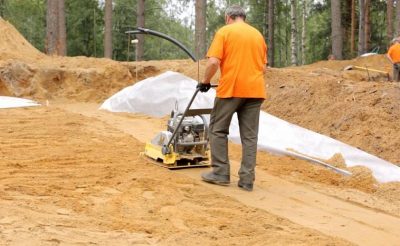

When building foundations for houses, garages, country paths and much more, great attention is paid to the substrate consisting of gravel and sand. To ensure that the concrete monolith is laid evenly and does not begin to move over time, it is important to carefully level the underlying layer. For these purposes, you can use specialized vibratory rammers or rolling equipment, but manual ramming will be much cheaper.
The principle of do-it-yourself processing is that with the help of a home-made tool, blows are applied to the surface, due to which sand and crushed stone are compacted. In this case, ramming is performed after the laying of each of these layers.
Features of compaction of crushed stone
Any novice builder sincerely wonders why ram an already strong stone. However, there are several important nuances to consider:
- Since crushed stone is obtained by crushing, its particles are obtained of different sizes with free-form edges. Because of this, when laying the underlying layer, the particles of the material do not completely adhere to each other, forming a large number of air voids, the appearance of which, ultimately, leads to a decrease in the level of resistance to loads. If the fragments of crushed stone are tightly adjacent to each other, the volume of the material will decrease, but at the same time a more durable base is formed.
- If the crushed stone is laid on rocky ground, then compaction can be dispensed with. In this case, it is only necessary to level the gravel.
- After compaction of gravel, the layer thickness can be from 50 to 250 mm, depending on the loads that will be placed on the base.
In addition, when processing crushed stone, it is recommended to split the base. To do this, you need to divide the gravel into fractions. First, the larger material is laid, which is compacted by hand. Then backfilling of finer material is carried out, which is also compacted. The final top coat should be the finest material, which must be carefully leveled and re-tamped.
Thanks to this, the finished base will have increased strength. If you make a similar manual compaction of sand, the effect will be even better.
How to work with it correctly?
In order to start using the vibratory plate, no special skills are required.
Any person can cope with such a task if he remembers the safety rules and acts extremely carefully:
- Before starting work, a very thorough inspection of the vibrating plate should be carried out to find out if there is any malfunction in it. Particular attention should be paid to the transmission belt guard, as it is this that protects the engine from dust. If the vibrating plate is powered by diesel or gasoline, then it is required to check the presence of oil and fuel in the engine.
- The area you plan to work with the vibrating plate should be well leveled and cleaned of debris. Do not work on a dry or very wet surface, immediately after heavy rain.
- The mechanism should be started. In 80% of models, this requires only pressing the "START" button. There is also a manual starter on individual vibrating plates, so to use such models, you should gently start pulling on the cord and wait until the equipment warms up well. Start the engine only on a level surface.
- The operator of the device must always be behind the vibrating plate during work. He should not lean over the device too much or try to speed up the work with artificial methods. the tool will operate in a precise mode that will be selected according to the surface.
- Use the special handle to operate the vibrating plate for ramming and compaction. It enables the device to turn in all directions. After turning, you should quickly go over the plate so as not to accidentally injure yourself.
Do not forget that the consumables of the device should be changed in a timely manner. The oil should be changed at least once a month, or every 100 hours of operation. Use gasoline and oil only of the brand that is allowed, as otherwise it will lead to the fact that the plate compactor will quickly fail. The brands of gasoline and oil must necessarily correspond to what is indicated by the manufacturer to the technical manual for the device. Before tamping any loose materials, the surface to be treated should be cleaned. To do this, you should remove various debris from it - fragments of bricks, pieces of boards, cobblestones.
Sand
Compaction of the sand mixture is carried out using a different technology.
Operating principle for ramming with a vibrating plate:
- An even layer of sand should be poured onto the prepared surface. Its thickness must be at least 60 cm. Specific indicators will depend on how much your device weighs.
- Moisten the entire surface evenly with water.
- After that, the vibrating plate should be passed over the entire area at least 4 times.
- If the sand has acquired the required density, then you can fill in the second layer, and if it is loose enough, then go through the device a couple of additional times.
- On the second filled layer, repeat everything one more time.
When tamping is complete, the surface compaction coefficient should be at least 0.95. If you plan to install columns in the selected area, then additional equipment may be required for compaction.
Just as when compacting the soil with a manual rammer, the sand should also be moistened, this is an obligatory item in the plan. If this is not done, then during operation the vibrating plates will begin to create a lot of dust, and this, in turn, will cause the air-cleaning filters to quickly clog (this is especially important for vibrating plates on a gasoline engine).But keep in mind that you cannot use too much water, as otherwise it will begin to clog between the material and will interfere with its effective bonding. To achieve the desired cementing effect, water should be poured, but in moderation.
Structures of buildings and structures
Message from crosandr: Kcom = 0.95
thanks, but I asked a little about something else. Literally: I have a pit with a volume of 100 cubic meters. Do you need to bring sand in order to fill it up, for example, with Kcom = 0.95?
Message from Primeiro: Dap you need to bring sand to fill it up, say, with Kcom = 0.95?
Depends on the sand. Once I found K = 1.18, since then I have been taking it.
Message from: I have a pit with a volume of 100 cubic meters. Skok need to bring sand to fill it
Once upon a time there was a question of soil loosening. I attach what I "dug up".
Message from Alf: Depends on the sand. Once I found K = 1.18, since then I have been taking it.
Are you a designer or are you at the construction site?
Let me explain the problem: I work in a company that builds cottages. In the estimates, we lay the coefficient for volumes from 1.45 to 1.55 from the bulldozer. With a coefficient of 1.45, foremen persistently complain that there is not enough.
I'm trying to figure out the real odds. and I see in different places that it is about 1.05-1.2. and start something to fucking. How much should be budgeted for losses (during transportation and spreading around the site)? As I understand it, people often do not get enough sleep in the quarry, and this cannot be dealt with. but some transcendental coefficient comes out.
The eternal question.

